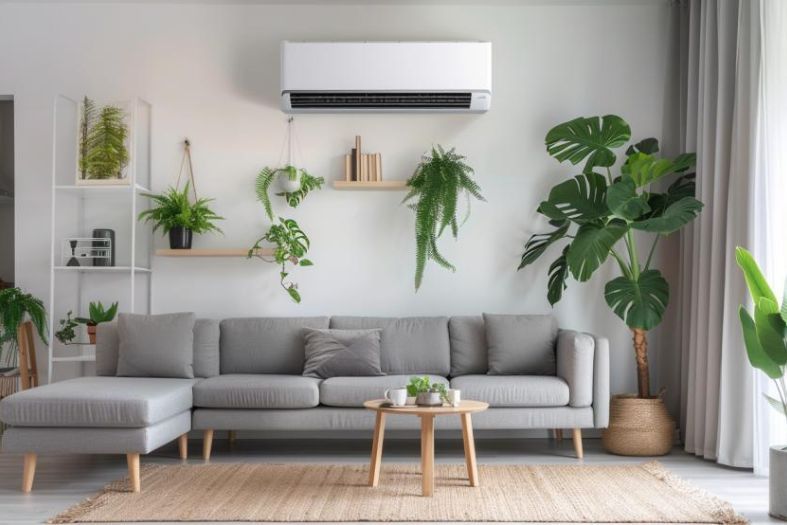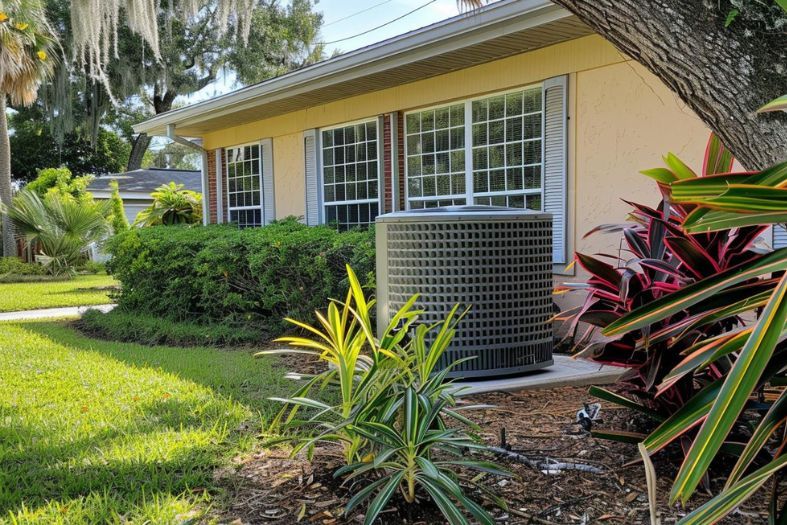
10 Common Plants That Improve Indoor Air Quality
Most of us don’t think about the air quality inside our homes or offices until we start feeling ill. In fact, the EPA has stated that indoor air can be up to five times more polluted than typical outdoor air concentrations. Poor indoor air quality can cause a number of health problems from asthma to allergies. Therefore, it’s important to have plants that improve the quality of air to help us breathe easier and fight allergies. Here are some plants that are known for their ability to improve indoor air quality.
1. English Ivy
English ivy (Hedera helix) is a beautiful, fast-growing vine that is often used as a decorative plant in homes and offices. In addition to its aesthetic value, English ivy can help to purify the air in indoor spaces. The plant is effective at removing harmful airborne pollutants such as benzene, formaldehyde, and carbon monoxide. English ivy is also known for its ability to reduce mold spores in the air, making it an excellent choice for people with allergies or respiratory conditions.
2. Chinese Evergreen
The Chinese evergreen, also known as the aglaonema, is a popular choice for indoor plants. Not only does it add a touch of greenery to any room, but it is also known for its ability to purify the air. The Chinese evergreen filters out harmful toxins such as benzene and formaldehyde, making it an ideal plant for homes and offices. Additionally, the Chinese evergreen is relatively easy to care for and can thrive in low-light conditions. For best results, place the plant in a location where it will receive indirect sunlight, and water it when the soil is dry to the touch.
3. Bamboo Palm
The bamboo palm is a popular indoor plant that is native to Southeast Asia and thrives in warm, humid climates. The plant gets its name from its slender, bamboo-like leaves, which grow up to 5 feet wide. The plant is an effective air purifier thanks to its ability to remove toxins from the air. In addition, the plant helps to increase humidity levels, which can be beneficial for people suffering from dry skin or respiratory problems. In addition, it is a low-maintenance plant that requires one to three waterings weekly. However, it should not be placed in direct sunlight or overwatered.
4. Dragon Tree
The dragon tree (Dracaena marginata) is a popular houseplant that is known for its ability to promote healthy indoor air quality. It is native to Africa and Asia, and it thrives in warm, humid climates. The plant is available in a variety of sizes and colors, making it a versatile option for indoor spaces. What makes it stand out is that it’s an excellent aesthetic addition to many homes and offices. In addition, the dragon tree helps to improve airflow and humidity levels. During the process of photosynthesis, the plant can help to remove chemicals and allergens from the air.
5. Mother-in-Law’s Tongue
When it comes to choosing plants for indoor spaces, many people opt for mother-in-law’s tongue (Sansevieria trifasciata). Not only is it an attractive plant with its long, strap-like leaves, but it is also known for its ability to promote healthy air quality. Mother-in-law’s tongue is especially effective at filtering out toxins such as formaldehyde and nitrogen oxides. Additionally, the plant releases oxygen into the air, making it a refreshing addition to any home or office. While mother-in-law’s tongue does best in warm climates, it can tolerate a wide range of conditions, making it an easy plant to maintain.
6. Gerbera Daisy
The Gerbera daisy is a beautiful flower that has a long history. It was first discovered by Robert Jameson in South Africa in 1884, and it was named after German botanist Traugott Gerber. The flower is characterized by its large, brightly-colored petals. The most popular colors are yellow, orange, and pink, but the Gerbera daisy can also be found in white, red, and purple. Besides being an excellent air purifier, this flower is also a popular choice for bouquets and floral arrangements, and it’s also a common gift for Mother’s Day. In addition, the flower has a long blooming season, and it is relatively easy to care for. As a result, the Gerbera daisy is a popular choice for both home gardeners and professional florists.
7. Peace Lily
The peace lily (Spathiphyllum wallisii) is a tropical plant that’s also known as the closet plant because it’s often grown indoors. While it is known for its beautiful white flowers, the peace lily is also an excellent air purifier. In addition, the plant can also help raise humidity levels, making it ideal for rooms that are dry or have little ventilation. For best results, place the peace lily in a bright room with moderate temperatures. It will thrive in humid environments and can even tolerate low levels of light. With proper care, this plant can provide many years of enjoyment.
8. Flamingo Lily
The flamingo lily gets its name from its showy pink flowers that resemble the plumage of a flamingo. In addition to its delightful appearance, the flamingo lily has some unique benefits. For example, it is known to improve indoor air quality by filtering out air pollutants. The plant does best in bright, indirect light and high humidity, making it an ideal choice for a bathroom or kitchen windowsill.
9. Aloe Vera
Aloe vera is a succulent plant that is native to Africa. The plant has thick, fleshy leaves that are filled with a gel-like substance, aloe. This gel is often used in cosmetics and skincare products because it is thought to have numerous benefits for the skin. In addition, aloe vera gel has been shown to have anti-inflammatory properties, which makes it effective in treating conditions like acne. But did you know that aloe vera can also help to promote healthy indoor air? This plant is very effective at absorbing air pollutants that are often found in household cleaning products. Note that aloe vera does best in warm, dry climates.
10. Rubber Plant
The rubber plant (Ficus elastica) is a popular houseplant that is easy to care for and versatile in its placement. The plant can grow to be quite large, reaching heights of 10 feet or more. The glossy, dark green leaves are what give the rubber plant its name, as they are thick and rubbery to the touch. The leaves are also oval-shaped with smooth edges. The plant is native to the tropical rainforests of Southeast Asia, India, and Malaysia. But this popular houseplant is not only pretty to look at — it can also help to purify the air in your home.
Improve Your Indoor Air Today!
Improving your indoor air quality today is as easy as giving [company_name] a call! We specialize in heating and cooling system installation, and we’re proud to offer financing for air conditioning and furnace installations, service, and maintenance for residents in Gainesville, GA area. We understand that the quality of your indoor air can have a profound impact on your health, so we’re committed to providing our customers with the best possible service. Call us today to learn more about our services.
Table of Contents
More Articles
Categories












Leave a Reply